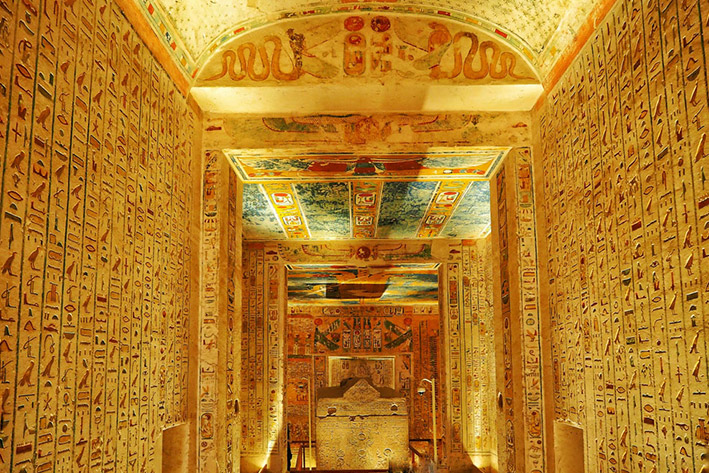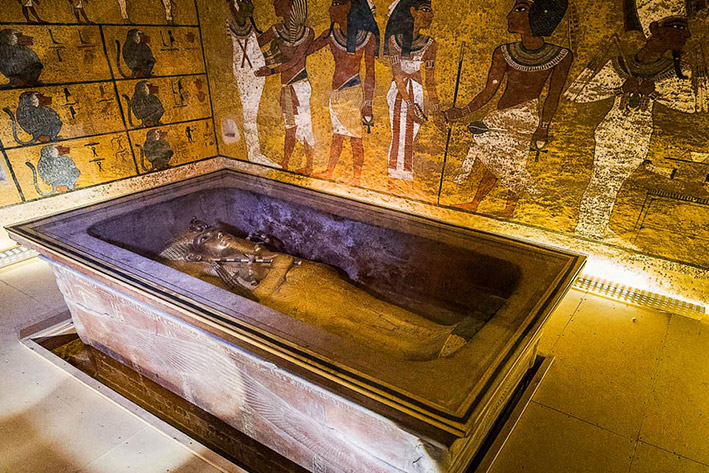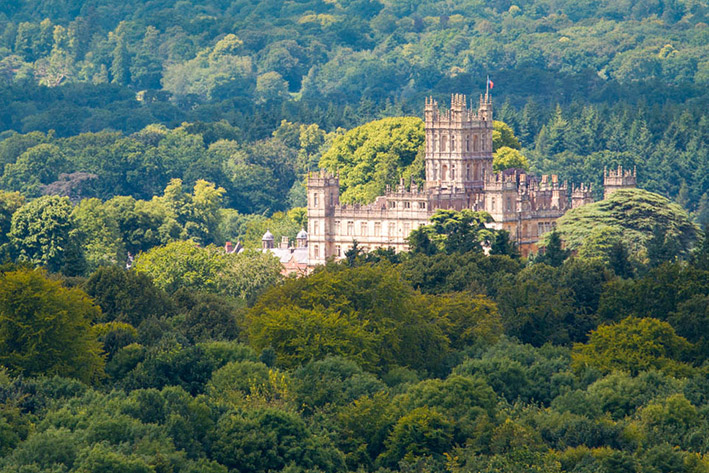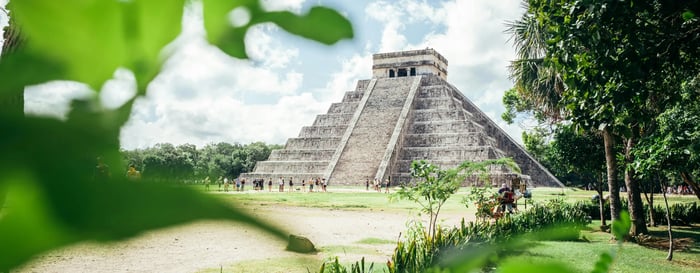Airport security fears the curse of the Pharaohs may have struck again. Its VIP handlers have lost their honourable guests - the 8th Lord and Lady Carnarvon, descendants of the man who discovered Tutankhamen's tomb nearly 100 years ago.
But there’s no curse, just a simple case of mistaken identity. We’re not esteemed landed gentry, just two British writers lucky enough to be accompanying them.
It does strike me as odd that we are chaperoned, warmly welcomed and whisked through customs through diplomatic channels. But our red-carpet treatment ceases abruptly when VIP security realise their mistake.
"Have you seen the Lord and Lady anywhere?” an anxious security lady asks.
“Afraid not, no.”
The last we’d spotted they were in the luxurious seats at the front of our flight from London.
“Would you have a mobile number for them?”
We politely shake our heads; it would take too much time to explain the etiquette of the British class system to her.
“The Lord and Lady? Are they contactable on Facebook?" she asks undeterred, referring to the social media website so key in Egypt’s Arab Spring revolution.
Their concern is temporary, and as soon the Earl and Countess are located our security lady can breathe easily again.

By the time we reach Luxor everything runs as smoothly as the feluccas, the traditional sailing boats that float down the Nile nearby.
The following morning we pass lush sugar cane fields en route to the arid desert mountains of the Valley of the Kings. Roads snake through red limestone hills until we reach the vast desert tomb complex where Egypt’s pharaohs were buried in individual and magnificent tombs. It’s a special moment to stand alongside the current Lord Carnarvon nearly a century after his great-grandfather and the British archaeologist Howard Carter unearthed King Tutankhamun’s tomb.
"It’s so poignant being here,” the Earl tells me at the entrance to Tutankhamen's tomb. The burial chamber is submerged in rock, flanked by opulent tombs of kings Merneptah and Ramses VI.
We slowly descend underground on wooden planks that cover the original limestone steps into the ancient corridor into the main burial chamber. Soon we see Tutankhamun’s body in a temperature-controlled glass box. His blackened face and skeletal feet are clearly visible.
“Whenever I’m here, I always try to imagine the incredible moment when my great-grandfather arrived with Howard Carter at the door.”
In early November 1922, an overwhelmed Carter could barely speak as he gazed upon treasures illuminated by his flickering torch. The boy king’s remains were discovered encased in several coffins, one made of solid gold.
The current Earl tells me an interest in archaeology runs very deep in his family. “I have a wonderful photograph of my great-grandfather as a 11-year-old on the edge of an excavation of an iron-age tomb. Even as a boy he was keen on archaeology and interested in ancient objects.” In fact, his father, the 4th Earl of Carnarvon, a minister in Benjamin Disraeli’s government, was President of the Society of Antiquities.

“My great-grandfather had a burning ambition to find a beautiful object that no-one else had yet found," says the Earl. “Of course, he found it in spades in the end. But sadly he didn't live long enough to see the king's golden death mask."
The 5th Earl of Carnarvon died in Cairo in April 1923, just a few months after entering King Tut’s burial chamber. He succumbed to an infected mosquito bite after nicking himself while shaving. These were the days before penicillin and the wound developed into blood poisoning.
With his death coming so soon after his momentous discovery many were quick to see something sinister afoot. Some newspapers viewed his death as the Curse of Tutankhamen, or the Mummy’s Curse. Even the bestselling authors of the time, like Sir Arthur Conan Doyle and Rider Haggard, warned of a curse on those who opened Tutankhamen's tomb.
But, nearly a century on, the current Earl dismisses any kind of curse. "It’s a great story,” he says with a weary smile. “But the truth is my great-grandfather was a frail man due to a car crash several years earlier.”
The 5th Earl’s health had been severely weakened by a near-fatal accident in Germany in 1901. “The discovery of Tutankhamen’s tomb was a huge success, but also very stressful for him. He did a deal with The Times newspaper that he thought would simplify his and Howard Carter's lives. But it caused so much jealousy and competition and made life difficult. It resulted in arguments, even with Carter, about access to the tomb and all the tourists and the press.”
Of course, the Earl and Countess are also known by the nickname Lord and Lady Downton. Their family seat in the UK, Highclere Castle, on the Hampshire and Berkshire border, is the setting for both the successful Downton Abbey TV series and the new film.

The Earl says that his great-grandfather’s decision to embark on one last fateful trip to Egypt with Howard Carter was made at Highclere.
After five years of arduous excavation work in the Valley of the Kings both Lord Carnarvon and Carter were exhausted. They had looked but had little to show for their relic hunting. He granted Howard Carter one last season to come up with something," says Lord Carnarvon. "And suddenly they made the most amazing archaeological discovery that’s ever been made - even to this day.”
In Luxor itself, many traders remain good-humoured amid fluctuating tourist numbers. Some are real characters with superb comic timing.
“May I have a Coke, please?” I ask one café waiter.
“Sure,” he replies. “There’ll be hour’s wait, though, as I have to cycle 10 miles and back to collect it. Okay?”
There’s an awkward few seconds until his face collapses with laughter.
“Of course you can,” he beams. “I’ll bring you one right away!”
In Cairo, we accompany the Earl and Countess to Saqqara, 20 miles south of the city. The journey through Cairo's chaotic streets is an adventure in itself.

We pass smart limousines with blacked-out windows, women on donkey carts, and several men huddled onto dusty Chinese-made motorbikes. Roadside, children with ruffled hair play football on dusty streets, while women herd flocks of goats. Piles of bricks are perched precariously on the back of trucks; others are overloaded with sugar palms.
Finally at Saqqara, we visit the famous step pyramid of Djoser, and the serapeum, an underground necropolis devoted to Apis bulls. Buried in giant sarcophagi, these sacred creatures were believed to be incarnations of the ancient Egyptian god Ptah.
At the famous pyramids at Giza, near Cairo, we climb hundreds of feet inside the Great Pyramid. Then we are forced to crouch as we crawl up a steep narrow passage to reach burial chamber of Cheops, the fourth dynasty Egyptian pharaoh.
“We've been here a few times before but never inside," says Lady Carnarvon. "It's very special, but also a little like military training!”
Like all the sacred burial chambers and ancient Egyptian sites visited, I experience a strong sense of history here. And that feeling is made even more profound in the company of travellers whose ancestors contributed so significantly to its heritage.
Classic Mexico
- Explore Mexico City with its museums, nightlife and excellent hotels
- Discover the Mayan ruins of the Yucatan Peninsula
- Stay at the beautiful historic haciendas of colourful Merida
- Take a jeep safari and boat ride in the jungle of the Sian Ka’an Biosphere on the Caribbean coast
- Relax on the stunning sands of Tulum
Mexico's Colonial Heartland & Pacific Coast
Mexico City Mexico's Colonial Cities North America Pacific Coast, Mexico
- Explore the pre-Columbian city of Teotihuacan
- Wander around the Baroque monuments of Querétaro
- Visit the historic centre and artisans’ quarters of San Miguel de Allende
- Discover Mexico City's local food and wine with a cookery class and vineyard visit
- Unwind on Mexico’s Pacific Coast at Rosewood Mandarina
Tea Plantations and Coastal Hideaways
Sri Lanka's Hill Country Sri Lanka's Southern Beaches Sri Lanka Indian Subcontinent
- Experience one of the loveliest train journeys in the world, from Colombo up to the Hill Country
- Explore the countryside surrounding Ceylon Tea Trails
- Spot blue whales and dolphins from the coastal town of Mirissa
- Wander through the streets of Galle Fort, shopping for local artwork
- Go on a day trip to Yala National Park to look for Sri Lankan leopard








